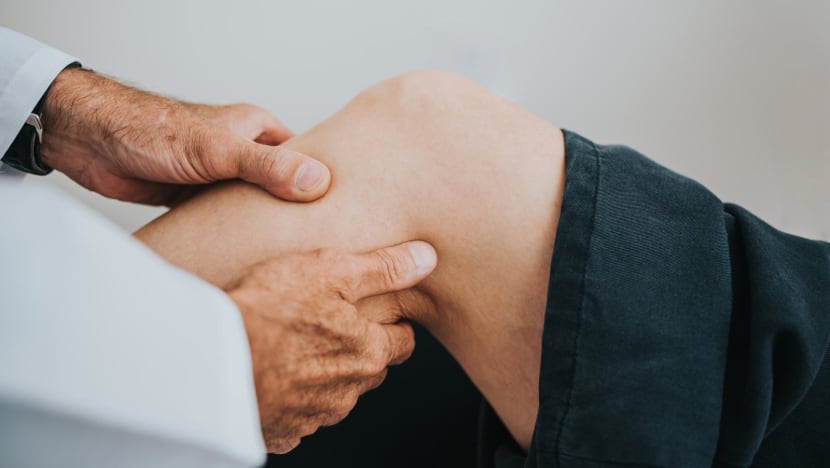Higher subsidies for patients getting implants on approved list after changes to framework
However, the enhanced subsidies will apply only if the devices fall under a new list comprising implants assessed to be clinicially- and cost-effective.

A patient getting his knee checked at a doctor's office. (Photo: iStock)

This audio is generated by an AI tool.
SINGAPORE: Patients requiring implants including for the heart, eyes and knees will soon get higher subsidies if they fall under a new list of devices assessed to be clinically- and cost-effective.
This comes as part of ongoing efforts to ensure that healthcare remains affordable and cost increase stays sustainable, said the Ministry of Health (MOH) in a news release on Wednesday (Nov 29).
The changes to the subsidy framework will kick in on Friday.
Currently, patients are subsidised for almost all implants, which are medical devices surgically placed inside or on the surface of the human body.
Singapore citizens are subsidised up to 50 per cent, with a cap of S$1,000 (US$752), while Permanent Residents (PRs) are subsidised up to 25 per cent, with a cap of S$500.
But according to MOH, this subsidy framework is "not ideal".
"First, it applies to almost all implants irrespective of their clinical- or cost-effectiveness. As a result, there is little incentive for implant manufacturers to reduce prices to improve patient affordability, since their implants are already eligible for subsidy," said MOH in the news release.
"Second, the dollar cap on the subsidies also disadvantages patients who need higher cost implants."
The use of implants is expected to increase as the population ages, it added. Newer and more costly implants are likely to enter clinical use rapidly, so there is a need to "refresh the current implant subsidy framework so that it works better for our patients”, said MOH.
HIGHER SUBSIDIES FOR LISTED IMPLANTS
On Friday, MOH will introduce the Implant Subsidy List, which comprises implants that are fully registered with the Health Sciences Authority (HSA) and were assessed by the Agency for Care Effectiveness (ACE) to be clinically- and cost-effective.
As long as a patient meets the clinical criteria for implants on the list, he will be eligible for higher subsidies than today.
Under the new framework, Singapore citizens will receive between 50 and 80 per cent subsidy in B2 and C wards and day surgery settings - with no dollar cap. The current maximum subsidy is up to 50 per cent and there is a cap of S$1,000.
PRs will be subsidised between 25 and 50 per cent for implant procedures in similar settings, more than the current maximum of 25 per cent and S$500 cap.
MAJORITY OF IMPLANTS INCLUDED IN LIST
The new Implant Subsidy List also means that implants will no longer become automatically eligible for subsidy.
MOH said: "This facilitates negotiations with implant manufacturers for more competitive prices, and increase affordability of clinically- and cost- effective implants to patients."
Pointing to a pilot run from 2017 to 2022 involving various heart as well as hearing implants, MOH said prices for the listed implants were reduced by up to 25 per cent during that period. The amount spent on the implants also fell, resulting in savings of around S$8.3 million.
The new list will cover 92 per cent of the amount of implants used in public healthcare institutions from 15 out of 26 categories that have been assessed. This includes categories such as cardiac implantable electronic devices, ear and hearing implants, and glaucoma treatment implants.
The remaining 11 categories currently under assessment include spine as well as trauma and joint replacement implants. These will be progressively added to the subsidy list over the next few years by end-2025.
Patients who need to use implants from the categories that are not yet assessed will still be eligible for the existing capped subsidies.
Patients getting implants that are not on the list will not be eligible for any subsidy.
There are no changes to MediShield Life, MediSave and Integrated Shield Plans coverage for implants.
“Regardless of whether the implant is listed on the Implant Subsidy List, patients may continue to tap on these schemes where applicable to pay for the implant, subject to the respective limits,” said MOH.
The ministry added that it will monitor the implementation of the list and review the financial coverage of these schemes at a later time.
















